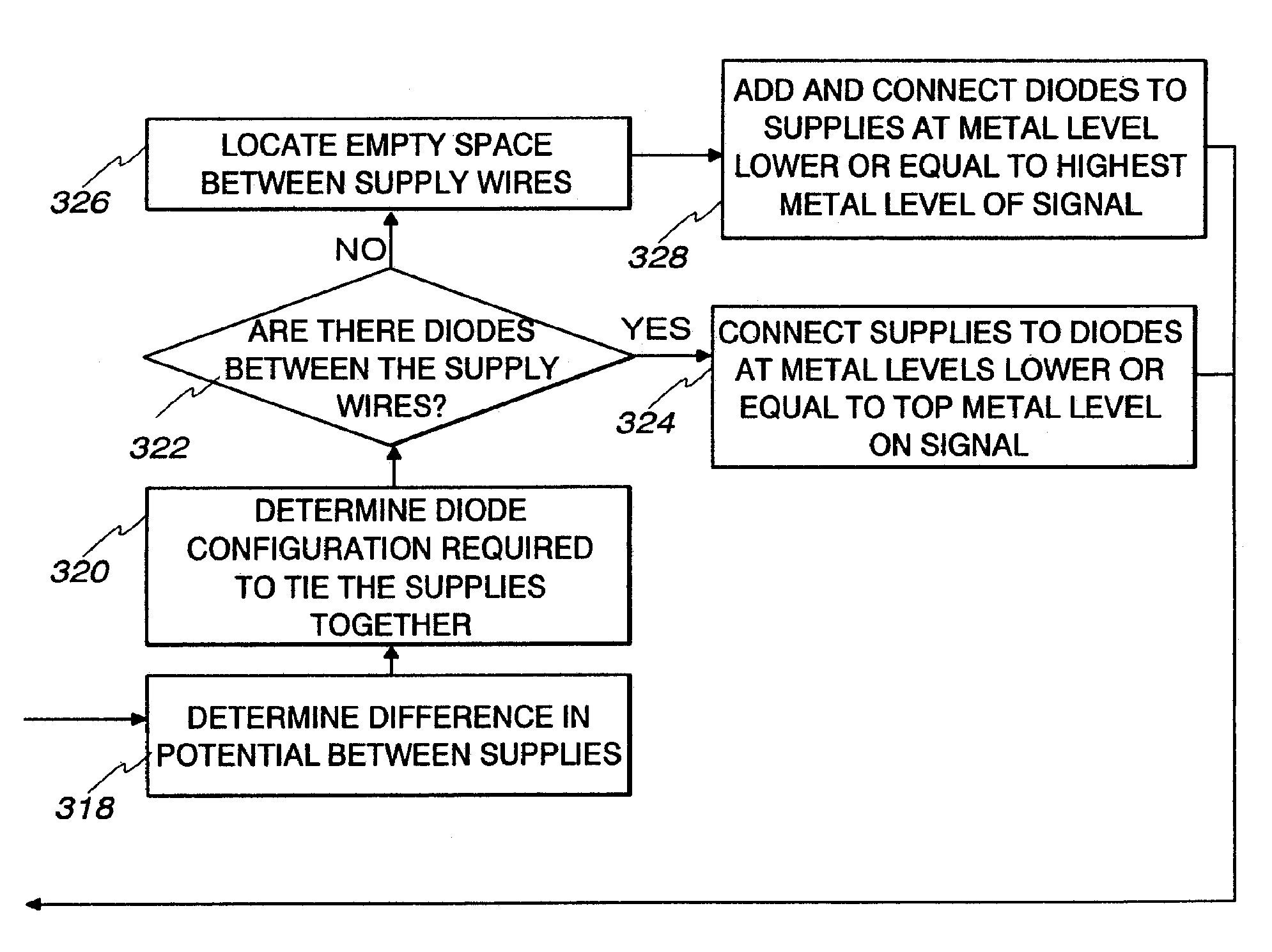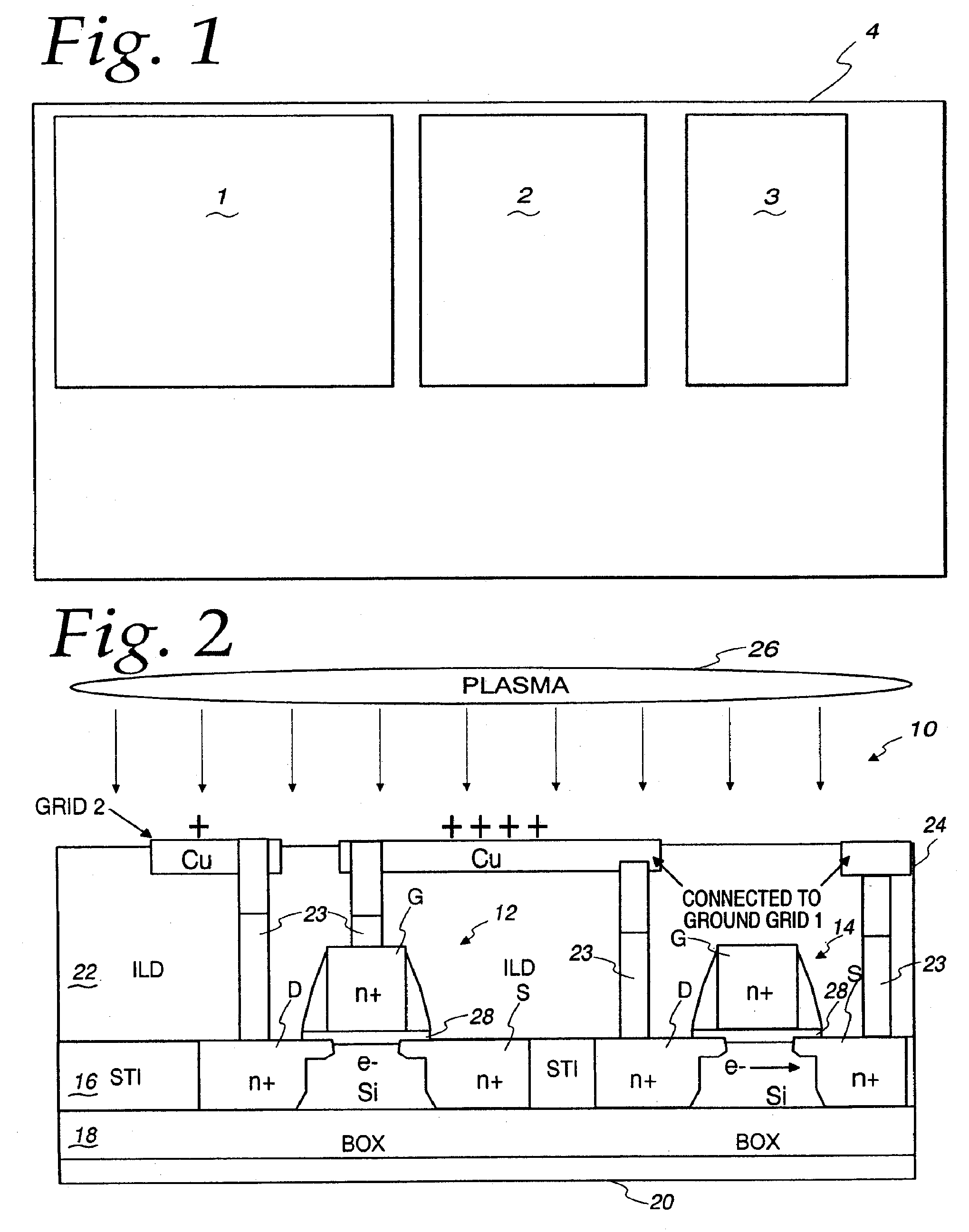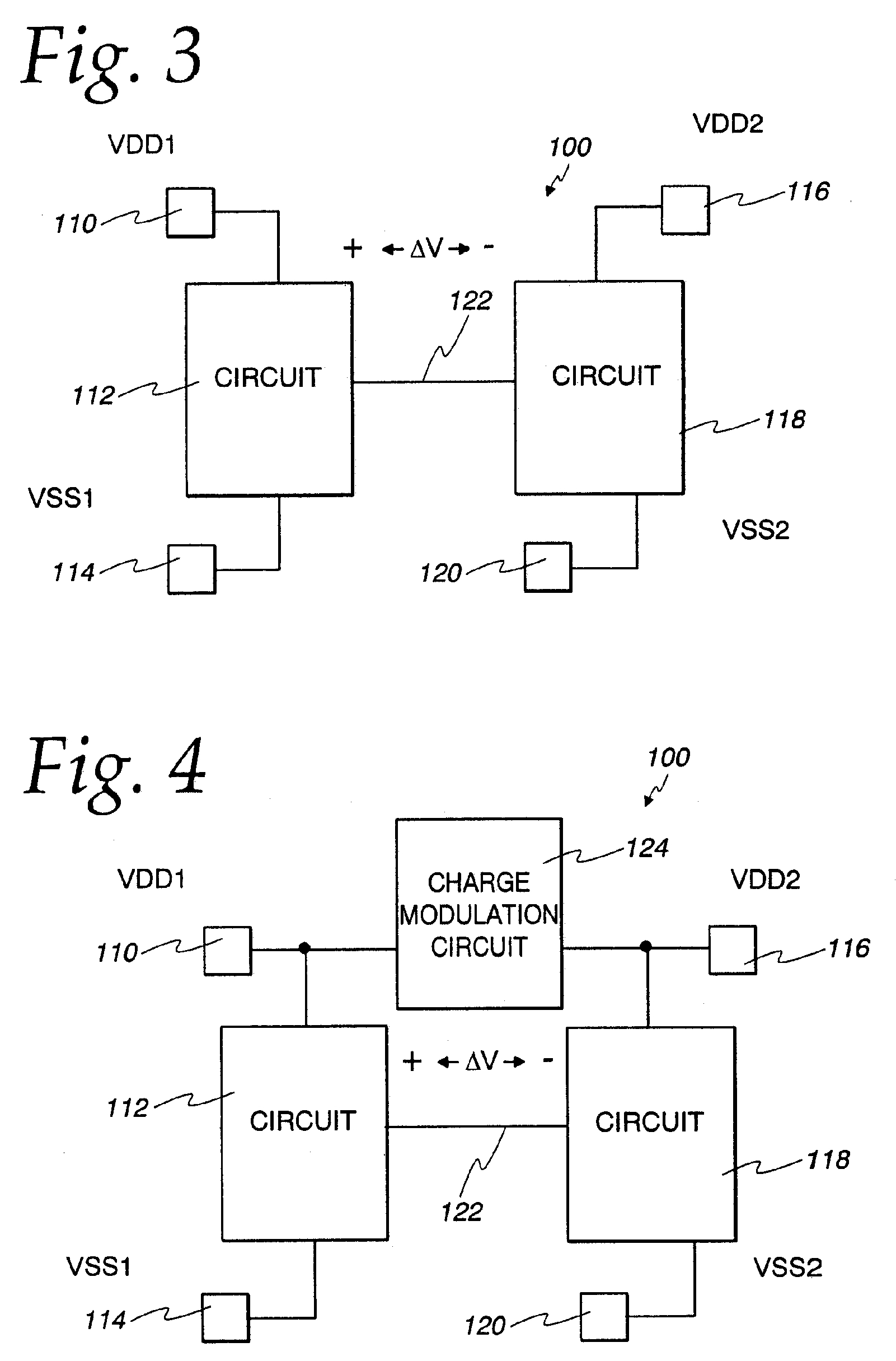Charge modulation network for multiple power domains for silicon-on-insulator technology
a technology of silicon-on-insulator and charge modulation network, which is applied in the direction of semiconductor devices, semiconductor/solid-state device details, electrical apparatus, etc., can solve the problems of degradation of yield and reliability of integrated circuits, damage to gate dielectrics, and charge damage in soi devices, so as to achieve the effect of mitigating the accumulation of electrical charges
- Summary
- Abstract
- Description
- Claims
- Application Information
AI Technical Summary
Benefits of technology
Problems solved by technology
Method used
Image
Examples
Embodiment Construction
[0045]Referring initially to FIG. 1, a plurality of blocks 1, 2 and 3 are illustrated as a sub part of a larger block 4. The larger block 4 may comprise, for example, a wafer with blocks 1, 2 and 3 comprising individual chips on the wafer. Alternatively, the block 4 may comprise a chip with the blocks 1, 2 and 3 representing circuit domains or regions on the chip. The blocks 1, 2 and 3 particularly represent the separation of grounds and power domains in manufacture of a silicon-on-insulator (SOI) chip. For example, the blocks 1, 2 and 3 may comprise areas, in the form of logic and / or memory, on the chip 4 supplied through separate, dedicated power feeds, also known as voltage islands. Alternatively, they may comprise areas within an island fed by the same voltage source but independently controlled via an inter-island header switch, referred to as a power domain. The teachings of the present invention are applicable to plural power domains and / or voltage islands, and for simplicity...
PUM
 Login to View More
Login to View More Abstract
Description
Claims
Application Information
 Login to View More
Login to View More - R&D
- Intellectual Property
- Life Sciences
- Materials
- Tech Scout
- Unparalleled Data Quality
- Higher Quality Content
- 60% Fewer Hallucinations
Browse by: Latest US Patents, China's latest patents, Technical Efficacy Thesaurus, Application Domain, Technology Topic, Popular Technical Reports.
© 2025 PatSnap. All rights reserved.Legal|Privacy policy|Modern Slavery Act Transparency Statement|Sitemap|About US| Contact US: help@patsnap.com



